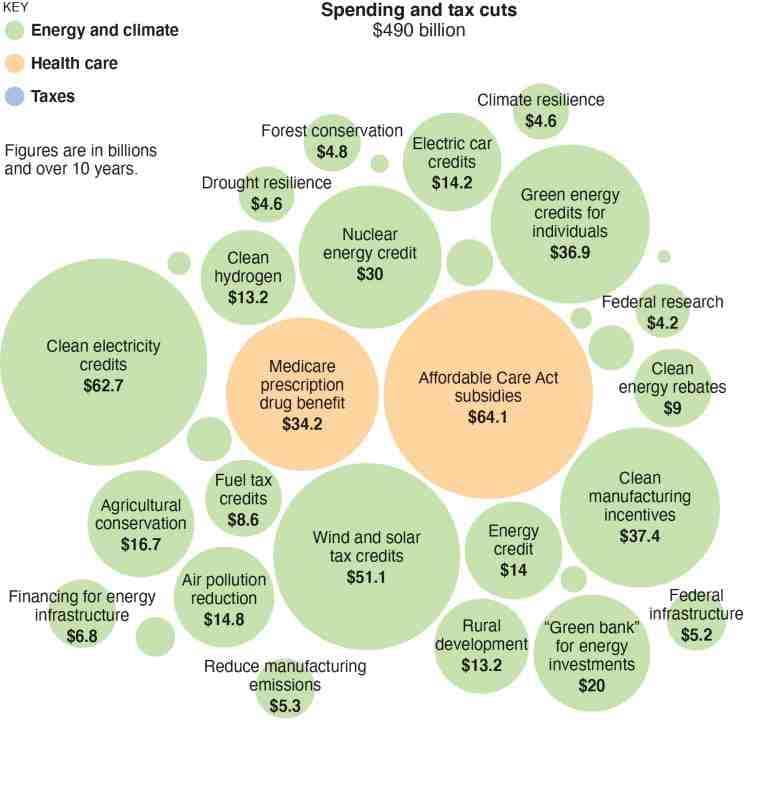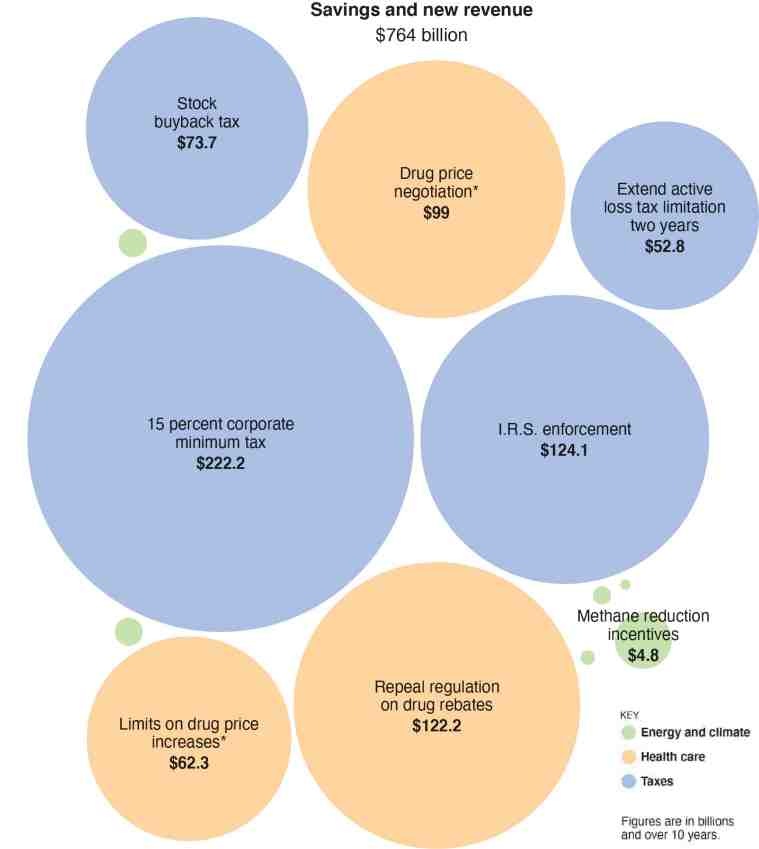Explained: What is in the Climate & Health Bill signed into law by Joe Biden?
The Inflation Reduction Act, though less ambitious than originally planned, is substantial legislation that will make big investments in the environment and health care, and increase taxes on some key groups
 President Joe Biden signs the Democrats' landmark climate change and health care bill in the State Dining Room of the White House in Washington, Tuesday, Aug. 16, 2022, as from left, Sen. Joe Manchin, D-W.Va., Senate Majority Leader Chuck Schumer of N.Y., House Majority Whip Rep. James Clyburn, D-S.C., Rep. Frank Pallone, D-N.J., and Rep. Kathy Castor, D-Fla., watch. (AP Photo)
President Joe Biden signs the Democrats' landmark climate change and health care bill in the State Dining Room of the White House in Washington, Tuesday, Aug. 16, 2022, as from left, Sen. Joe Manchin, D-W.Va., Senate Majority Leader Chuck Schumer of N.Y., House Majority Whip Rep. James Clyburn, D-S.C., Rep. Frank Pallone, D-N.J., and Rep. Kathy Castor, D-Fla., watch. (AP Photo)Written by Francesca Paris, Alicia Parlapiano, Margot Sanger-Katz & Eve Washington
Democrats in the United States Congress have had to scale back their legislative ambitions since last year, but the Inflation Reduction Act, signed by President Joe Biden on Tuesday (August 16), is still substantial legislation that will make big investments in the environment and health care, and increase taxes on some key groups.
The Bill includes policies lowering the prices of prescription drugs; increasing the generosity of Medicare benefits; and encouraging the development of renewable energy and reducing the impact of climate change.
It will also raise taxes on some corporations and bolster the ability of the Internal Revenue Service to crack down on wealthy tax evaders. It will lower the federal deficit, though modestly.
The Bill includes last-minute changes requested by Senator Kyrsten Sinema, Democrat from Arizona, the final holdout among her party’s 50 senators. Democratic leaders agreed to remove a tax on some wealthy hedge fund managers and private equity executives, and to include $4 billion in drought funding for her state.
 Spending and tax cuts (Source: NYT)
Spending and tax cuts (Source: NYT)
If the current Bill includes a lot — in spending, new taxes and policies — it also omits a lot of the Democrats’ original ambitions. Missing is an entire set of family policies that were in a Bill passed by the House last year, such as a generous child tax credit and paid family leave.
 Savings and new revenue (Source: NYT)
Savings and new revenue (Source: NYT)
Certain health policies, such as an expansion of Medicaid to give more low-income adults health insurance, were removed to pare down the Bill’s cost. And though the climate policies are the most expansive passed by any Congress, they are more modest than those included in earlier versions of the legislation.
The current Bill includes clean electricity incentives that are comparable in size to those in a version passed by the House last year. But it scales back spending in almost every other category, from transportation to climate resilience. Some proposed investments from earlier versions — like those for lead remediation, workforce development such as a Civilian Climate Corps, and electric bicycle tax credits — did not make it into the new text.
The one major exception is manufacturing: Compared with previous versions of the Bill, this legislation marks a significant increase in grants, loans and tax credits to manufacture clean energy technology domestically.
But it also pairs new climate spending with several major concessions to the fossil fuel industry at the request of Senator Joe Manchin of West Virginia, whose support was necessary to advance the Bill.
The Inflation Reduction Act is projected to reduce deficits by roughly $275 billion over 10 years, while the Build Back Better plan passed by the House in November would have added about $160 billion to deficits.
Democrats have said the new Bill’s deficit reduction, as well as the provisions aimed at lowering energy and prescription drug costs, will help address the rapid inflation over the past year. Many economists, including supporters of the Bill, have said that while it may reduce price pressures, the overall effect is likely to be modest, and over the long term.
The promise of taming inflation helped bring Manchin on board, who cited concerns about rising prices when he pulled his support from the Bill passed by the House last year.
In a statement last month after an agreement on a new Bill had been made with Democratic leadership, Manchin announced, “Build Back Better is dead, and instead we have the opportunity to make our country stronger by bringing Americans together.”
This article originally appeared in The New York Times.
- 01
- 02
- 03
- 04
- 05






































